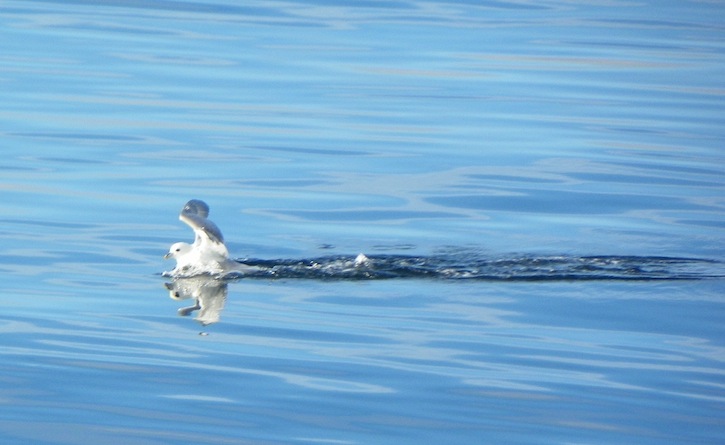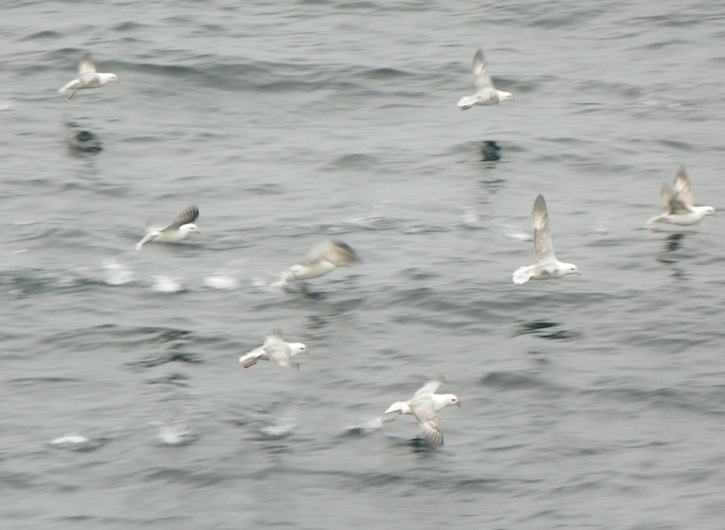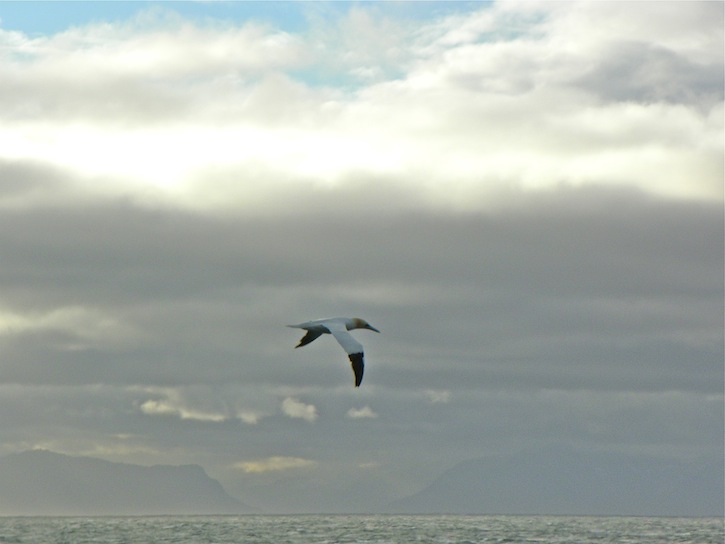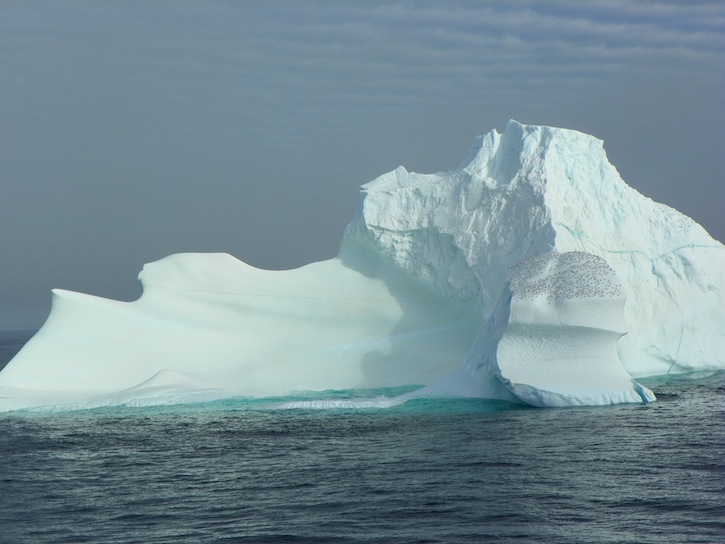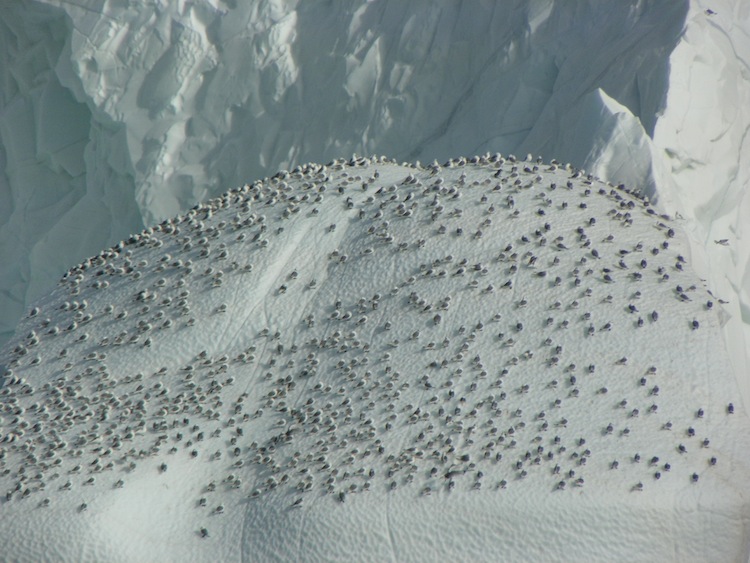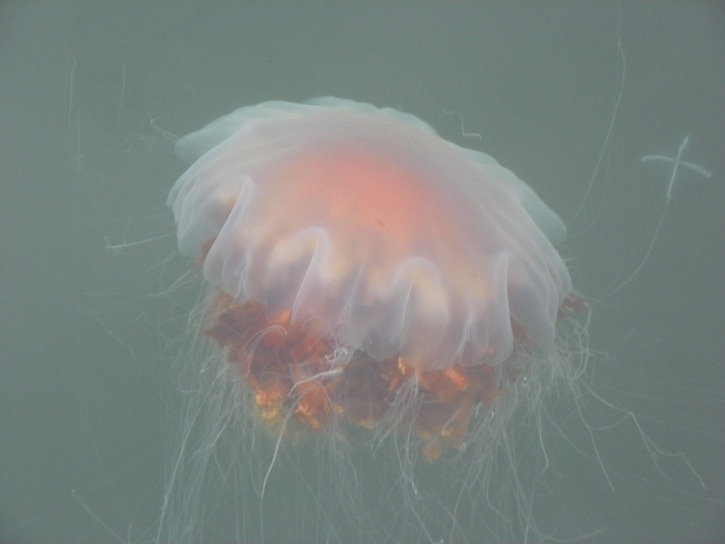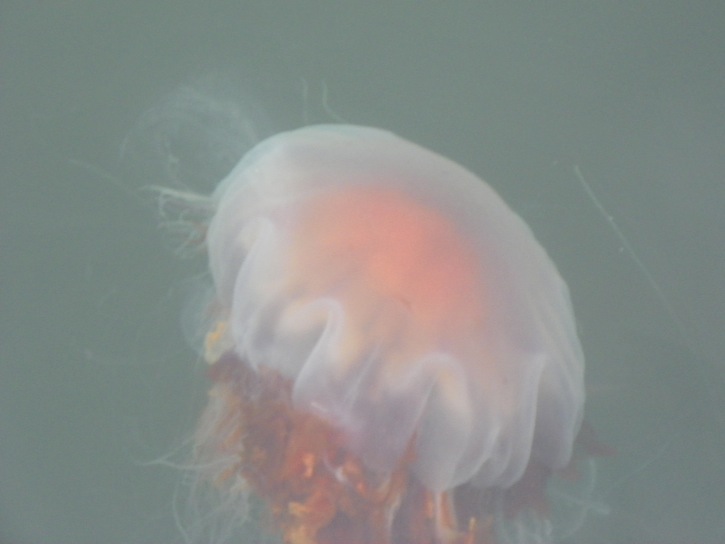Question 1: What animals are you able to see? Answer: We are seeing mostly seabirds. I have listed all the animals for the Netherlands Schools question #2 with some photos. But, lucky for you, I saw seven gannets today, the first for me though others have seen a couple earlier in the trip. Also, I’ve identified a duck I saw in the Siglu Fjord in Iceland as a female eider. There are always dozens of northern fulmars around the KNORR whether we are near Western Iceland, Greenland, Eastern Iceland or in the sea far from all land. We watched an aurora borealis from the flying bridge (deck over the bridge and about 50 feet above the water) in the dark and could see them soaring by in the ice light on the bow. I also identified our mysterious orca/dolphin like marine mammals as white beaked dolphins (again, from Tertnes school answers). I’d show you my photo but it is a small blob of black way out in the water. And, I just heard the story from the third mate, Mike, that when he was out in the Zodiac (small boat) with Rob from National Geographic a whale was spotted. They zoomed after it. I saw that. It breached (jumped out of the water), then dove under their boat and stayed there a while. I didn’t see that. Mike said it was definitely a humpback whale.
Answered by Pat Keoughan, Outreach Team Question 2: Is there life on icebergs? The only life we saw on the icebergs near Greenland were the kittiwakes. I became curious about this topic after reading your question and turned to the internet. I did find a press release from the National Science Foundation from June 17, 2007 with the title Antarctic Icebergs, Unlikely Oases for Ocean Life. I learned that phytoplankton (microscopic plant plankton), krill (tiny shrimp like animals, often the food of baleen whales), fish and seabirds can be found living on and around icebergs. Another website you might check out is: http://www.sciencedaily.com/releases/2007/06/070621140754.htm.
Answered by Pat Keoughan Question 3: Do the different currents in the water carry different fish or other creatures, or do the fish and other creatures just swim around anywhere in the water? Answer: I have been looking in some old books in the library and online to answer your question since there is no biologist on board. I can tell you from my experience that the two common types of jellyfish we’ve seen have, like the seabirds, been the same throughout our cruise. I also know that the whales we are most likely to see are the ones we have identified so far, the humpback and the minke along with the white beaked dolphin. Since we have traveled through and over many different currents, my answer would be that the fish, jellies, and marine mammals that are adapted to how cold and salty the water is, and how close to land they are or how deep the water is where they hang out in the Iceland Sea, will be found there no matter what currents they pass through. What might keep them in a particular current is if that is where they find their food. Getting food is a huge driving force for movement of wildlife in an ecosystem like the Iceland Sea. The Iceland fishermen find the capelin, herring, cod, mackerel, haddock, halibut and other species they catch, not by what current the fish are in, but by how far from land they live or the depth of the water they’re found in. There will be zooplankton (tiny animal plankton) that drift with the current they are born in. I’m sure there are exceptions to my answer for the larger sea life. You have set me to wondering if there are species of marine life that do follow large currents, such as the Gulf Stream near the US east coast in the Atlantic that are a different temperature from the local water they flow through. The Gulf Stream brings warm water from the tropics all the way to Norway. The currents in the Iceland Sea are not as different from each other as that.
Answered by Pat Keoughan Last updated: December 27, 2011 | |||||||||||
Copyright ©2007 Woods Hole Oceanographic Institution, All Rights Reserved, Privacy Policy. | |||||||||||


